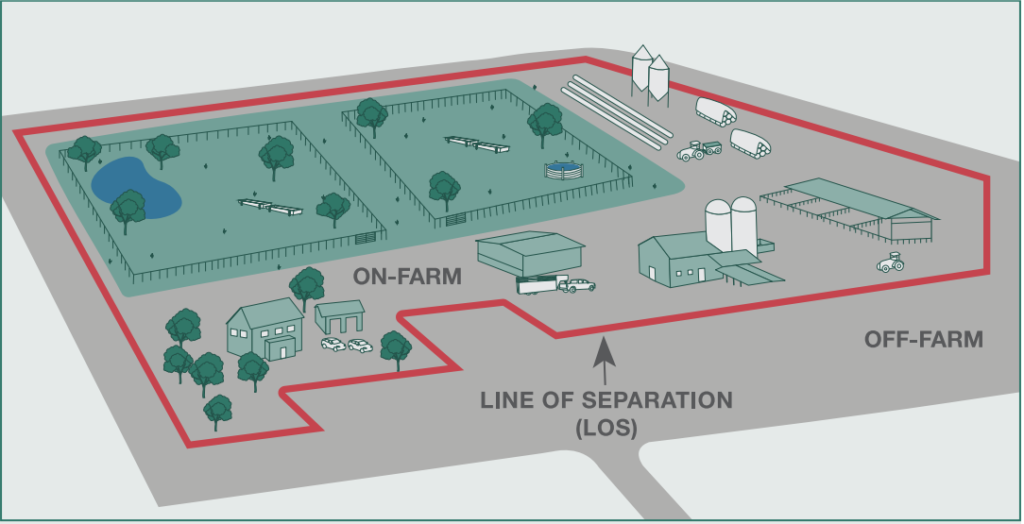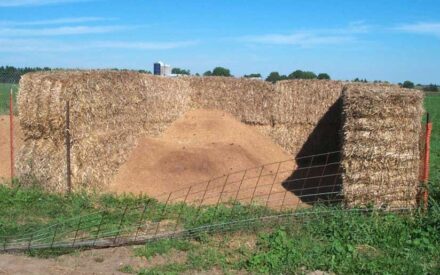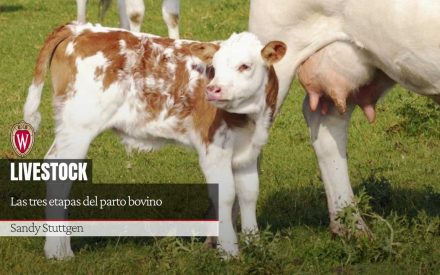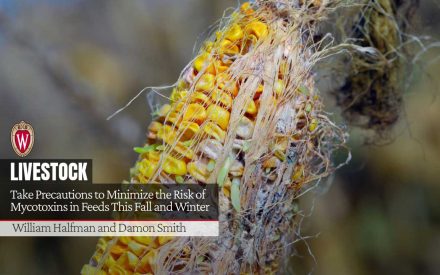Bringing new calves to the feedlot is stressful for them due to transportation, adjusting to a new home, changing feed, exposure to disease, and establishing social order with new cattle. Minimizing both clinical and subclinical disease in feedlots is essential for producers to improve profitability. Biosecurity practices producers implement can help reduce the risk of disease outbreak and spread within their operation.
Get newly arrived cattle off to a healthy start
Maintaining the immunity of the newly arrived cattle involves many health and nutrition management practices. Here are some tips on how to build immunity to diseases within your operation:
- As much as possible, fill your feedlot with pre-conditioned animals and ask for their health and feeding histories. Pre-conditioned calves should have been vaccinated to build their immunity to common diseases. They should also be familiar with eating from a bunk and drinking from a waterer which should help them better adapt to eating at their new home.
- Work with your veterinarian to set up receiving vaccination and metaphylaxis protocols. Knowing their incoming health history and origin is helpful in establishing receiving protocols. This is where a good veterinary client-patient relationship (VCPR) can pay off. Visit Recognizing and Managing Differences in Health Risk of Incoming Feeder Cattle | UNL Beef for more information.
- Fill the pen quickly (within one week) to establish a feeding group. Do not introduce new additions to this group as doing so disturbs the prevailing social balance and pen immunity.
- Source animals of similar size and age to feed, vaccinate and medicate as a group.
- Purchasing heavier calves (>600lbs.) may decrease chances of death loss and overall morbidity.
- Work with your nutritionist to set the receiving diet and subsequent rations. The animals’ nutritional requirements must be met in order for the immune system to function correctly. Improperly fed cattle are more likely to become sick and they will take longer to recover from disease.
- Do not overstock pens on arrival and make sure cattle have access to fresh hay and water with 18 – 24 inches of bunk space. Young calves prefer to eat as a group; therefore, everyone needs access at the same time. Clean, dry resting space is also needed.
- Weigh incoming cattle. A scale in the chute or alley ensures that accurate doses of animal health products are administered. Accurate weights are also helpful for determining nutritional needs. Weights are needed for calculating close-out information so you may determine the profit or loss from feeding each group.
- Use low stress handling practices and acclimate cattle to their caretaker(s). Doing so helps build their trust, so it is easier to identify problems sooner. Remember cattle are prey animals and they will hide their illness from you. Treatment outcomes are generally more successful when diseases are treated early, near to their time of onset.
- Separate incoming cattle from the existing herd. This means not allowing nose-to-nose contact with existing animals on the operation for 21-30 days. Remember that shared fence lines and waterers between pens provides nose-to-nose contact and can be avoided by physically separating the pens or using solid fencing between pens.
- Routinely clean and disinfect all equipment used to administer animal health products. Learn more about syringe and needle care at UW-Madison Livestock Extension , Cleaning and Sanitizing Multi-Dose Syringes and Transfer Needle article.
- Handle sick animals last to reduce the risk of spreading disease to the healthy cattle.
- Work with your veterinarian to establish treatment protocols that allow sick animals to stay with their feeding pen when practical. This minimizes the additional stress of adjusting to the hospital pen and re-adjusting to their home pen after their condition improves.
Traffic management
Farm visitors, advisors, service personnel, and deliveries of feed, fuel and numerous other inputs have the potential to bring disease agents onto the operation. Feed trucks, mixer wagons and people may also move pathogens around the farm. Managing all these movements can help prevent and reduce disease risk. Tips for managing traffic include:
- Map out lines of separation and specific traffic routes for various tasks at the facility to separate off-farm and on-farm traffic. Example mapping templates are available from the Center for Food Security and Public Health, Protecting the Herd/Flock: Line of Separation.
- Designate receiving areas for feed, supplies, and cattle deliveries to reduce traffic throughout the operation. For the same reason, mortalities should be picked up near the entrance of the operation.
- Post entrance/exit, parking, and movement signs. Make it easy for people to see where they should go.
- Use logbooks recording visitors’ names, when they arrived, when they left, and purpose of visit. Everyone must understand that they are expected to follow the operation’s biosecurity protocol when visiting. Information found in the visitor log will become valuable when confining a disease after it breaks on your operation.
- Limit visitors’ access to areas where feed is prepared, cattle pens, feed bunks, and handling facilities.
- Either provide disposable covers or require all visitors to disinfect their footwear before entering animal areas. Workers should also sanitize their footwear between feeding pens, and before and after leaving processing and hospital areas. Properly maintain boot wash stations as described in Cleaning and Disinfection on the Farm and Cleaning and Disinfection Biosecurity Tip Sheet.

Sanitation and Maintenance
Routine pen cleaning helps with both biosecurity and animal performance. In addition to improving biosecurity, cleaning, washing, and maintaining equipment will help extend its useful life. Regular cleaning will also help identify maintenance problems and safety.
- Using separate equipment to handle feed and manure is ideal and they should be stored far enough apart to prevent cross-contamination.
- Dedicate buckets, loaders, and other equipment (if practical) to specific tasks and areas to decrease the risk of spreading disease.
- Scrub small equipment and waterers (water tanks) with soap and water. Rinse with clean water. Follow the cleaning product’s label directions for use and adhere to all precautions.
- Clean and bed pens as needed to keep cattle clean, with minimal tag deposited onto their hides, and mud/manure depth kept to less than ankle deep. For more information on desired tag levels visit this mud and manure scoring factsheet.
- Ideally, pens are thoroughly cleaned of all debris and allowed to sit empty seven to 10 days between feeding groups. Hospital pens should also be cleaned, washed (if feasible), and allowed idle time for as long as possible.
- The cattle handling equipment and processing area should also be cleaned routinely to reduce risk of spreading disease.
- Power wash, when practical, as needed and only if there is good drainage and ventilation. Power washing aerosolizes potential pathogens and workers should wear eye and respiratory protection when using a power washer.
- Scrub or power wash feed and manure handling equipment as needed to prevent the build-up of debris that can harbor pathogens.
Pest Management
Starlings, pigeons, other birds, rats, mice, cats, dogs, raccoons, and other wildlife can carry and spread diseases that pose a threat to your feedlot. Along with spreading disease, they can consume substantial amounts of feed. According to an USDA-APHIS report, “A flock of 1,000 starlings using a CAFO for 60 days during winter will eat about 1.5 tons of cattle feed, representing a loss of $200 to $400 per 1,000 starlings.” Good sanitation and strategic use of pesticides can help manage these pests.
- Minimize spilled feed and keep feed alleys and storage areas clean.
- Promptly remove waste feed and do not allow it to build up under bunks.
- Limit cover for rodents and wildlife by mowing grass and weeds and laying stone or pavement or concrete around feed storage and feeding areas.
- Follow the label for all pesticides being used. Some pesticides are only available for use by a certified applicator.
- Contact local USDA Wildlife Services or other animal/pest control services to assist in the control of wildlife.
Getting cattle off to a good start in the feedlot is important to capitalize at the end of the feeding period. Minimizing cattle stress that comes with changing feed, exposure to disease, and new social groups is critical. Paying attention to biosecurity practices throughout the entire feeding period can help mitigate the introduction and spread of disease. Controlling traffic, performing routine maintenance, and reducing pests are biosecurity efforts producers can practice reducing the risk of disease outbreak on their operation.


 Composting Mortalities
Composting Mortalities Ayudar las vacas y a los terneros a recuperarse después de una Distocia
Ayudar las vacas y a los terneros a recuperarse después de una Distocia Las tres etapas del parto bovino
Las tres etapas del parto bovino Take Precautions to Minimize the Risk of Mycotoxins in Feeds This Fall and Winter
Take Precautions to Minimize the Risk of Mycotoxins in Feeds This Fall and Winter


